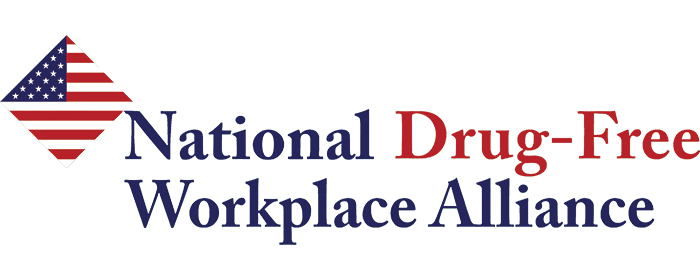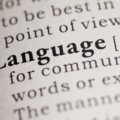Parenting Challenges
The Drug Scene Has Changed - As parents, we come from many backgrounds, cultures, geography, education and social structure. Some may have used drugs themselves or been exposed to drug abuse and addictive behavior as youth. All of these things contribute to the attitude we convey to our children about drug use, be it prescription, over-the-counter or illicit drugs. Parents need to know that the drug scene has evolved into a much more dangerous activity.
Marijuana Potency - In the mid-1970s THC content in pot averaged less than 1 percent. In 2009, the average THC content in marijuana reached more than 10 percent, with some samples reaching up to 30 percent. THC potency in CO is now at 17.1% while concentrates are testing at 62.1%.
Marijuana Trends - New trends in marijuana use aim to entice a new generation, many of whom are looking for alternatives to smoking a joint. Accidently eating pot brownies has been a perennial joke, but now, the array of colorful and appealing food products is growing as “ganjapreneurs” capitalize on the boom. Marijuana infused sodas, candies, cookies, snacks, and much more, are filling the shelves of retail marijuana shops.
Pot connoisseurs are now using a method called “Butane Hash Oil extractions.” This involves using a flammable solvent to extract the THC from the plant material resulting in a sap-like substance known as a “dab” or “shatter.” The extract is pressed onto the heated surface of an oil rig pipe and the vapor is inhaled. These extracts have extremely concentrated THC between 60-90% and can be extremely dangerous, causing users to pass out or worse.
Vaporizing, or “vaping,” is using a table-top or portable inhalation device to consume the heated vapor of marijuana as an alternative to smoking. Vape pens, akin to an e-cigarette device, are discreet to use, look sleek and modern, and can be recharged using a USB or wall adapter. Vaporizing virtually eliminates odor and the stigma of smoking, allowing users to vaporize higher potency forms of marijuana anywhere without detection.
Marijuana Legalization - Spurred by the civil rights movement and interpreted by pot advocates to mean they have the “right” to use drugs, as long as they are not harming others, is irrational because substance abuse does hurt others. Young people, believing pot is harmless, are put in a position of making choices that are detrimental to their personal health and safety long before their brains are fully developed in their mid-twenties. Succumbing to a drug that diminishes motivation at a time when they are making life choices about their careers, relationships, their future, can be devastating.
With many states making the decision to legalize marijuana under the guise of medicine, or recreationally, this trend gives people the false impression that marijuana is not harmful. In fact, the opposite is true. Many studies have demonstrated that marijuana causes numerous physical harms, along with the various dangers associated with intoxication such as significant increases in car crashes. Compassion for the sick and dying is admirable in theory, but the fact is that in states that track statistics on the medical conditions for which users obtain pot, the data show that on average, less than 10 percent are seeking pot for serious, debilitating conditions such as cancer, HIV/AIDS, ALS, etc. Over 90% are using it to treat non-specific pain, a very subjective and unprovable condition.
Synthetic Drugs – Unlike naturally occurring drugs such as opium and marijuana, many illegal synthetic drugs such as methamphetamine (known as meth) are created in a makeshift laboratory, possibly someone’s garage, utilizing chemicals such as lighter fluid and drain cleaner. In past decades, the invention and mass production of synthetic drug compounds such as ecstasy and crystal meth reached record levels due to inexpensive production methods and clandestine labs.
While these drugs are sold on the street, there is a new trend of packaged synthetic drugs labeled as “potpourri” or “bath salts” being sold for the purpose of getting high. Known as “K2,” “Spice,” or by hundreds of other names, these synthetic substances are typically sold at independent convenience stores, corner markets, tobacco shops, head shops, etc. The drug could be chemical compounds sprayed on plant material (such as synthetic marijuana) or a fine white or yellow chemical powder, sometimes manufactured as tablets or capsules (synthetic stimulants) and packaged in bright foil or plastic packages.
The Internet – Over the past 20-30 years, use of the World Wide Web (www) has exploded, vastly increasing the global availability of information about growing pot, producing illicit substances, obtaining drugs, products and paraphernalia, and even how to best consume the drugs to enhance the intoxication or effect of the drug-using experience.
The Media – The media has glamorized the consumption of drugs and alcohol into a dramatic and desirable activity, occurring even on primetime television, movies and news. The media normalizes adverse behavior, causing young people to think that “everyone is doing drugs or drinking,” and that it is the “cool” way to act. Additionally, drug advertising found on TV, radio, internet, and in newspapers and magazines empowers people to seek out drugs as an answer to every ache and pain. The term “medical” marijuana labels and connects pot to legitimate medicine which it is not, thus normalizing it.
Social Networking – 24/7 access via smartphones, tablets and laptops to a worldwide community of potential substance abusers using social networking sites such as Facebook, YouTube, Snapchat, Instagram, Twitter, Tumblr, and many others, directly connect potential or infrequent users with experienced users or persons looking to exploit the naive and ignorant. With younger and younger access to the web, exposure to substance use is becoming very common. It is a problem even if your child or teen does not have home access to social media. They easily access these sites at friends’ homes, on their friends’ phones, or even at the public library. Using social networking sites and online gaming groups to gain trust, child predators frequently use drugs and alcohol to entice face to face meetings with their targets.
The shift in society’s institutional structure - Society has changed dramatically in the past 30 years in many ways that challenge everyone.
- Family Structure – We now have many more single-parent families than several decades ago.
- Social Institutions – There is a trend away from more traditional denominational churches to non-denominational mega-churches. In addition, there is more acceptance of children from a family seeking their own religious path, or not, than ever in the past.
- Social Values – Social values are being attacked through the media, again, by normalizing excessive and intoxicated behavior.
- Mobility – As America has become a national and world marketplace, families frequently move, creating neighborhoods of strangers. In addition, extended family support is lost. There has been a trend of families moving away from small towns and into large population centers. Authoritative communities (consisting of extended family, neighbors, teachers, clergy, shop owners, coaches who made it their business to know each other) of just decades ago are much less common.
- Disposable Income – As the American economy has grown, individuals, including youth, have access to unprecedented income.
The news isn’t all bad - The reality of drugs and alcohol and its effect on youth seem discouraging, but not all the news is bad.
According to the 2013 Monitoring the Future National Survey Results on Drug Use - 1975-2013 - Volume 1—Secondary School Students, sponsored by the National Institute on Drug Abuse (NIDA), the majority of youth do not use drugs. Although historically drug use peaked in the late 1970s and early 1980s with approximately 40 percent of 12th grade students acknowledging current use of any illicit drug (past 30 days), it has sharply decreased to today’s level of almost 26 percent of twelfth graders indicating past 30-day use of any illicit drug. This means that 74% of current 12th graders do not use drugs. The numbers are even better for younger teens with about 84 percent of tenth graders and 92 percent of eighth graders choosing not to do drugs.
Contrary to conventional wisdom, parents are the most influential figures in a child’s life. Studies have shown that teens who hear anti-drug messages from their parents are 42 percent less likely to do drugs. In addition, two-thirds of kids say that losing their parents’ respect and pride is one of the main reasons they don’t smoke marijuana or use other drugs. Your words and actions matter.
Your best prevention tool is to get involved in your children’s lives and get educated on the issue.





